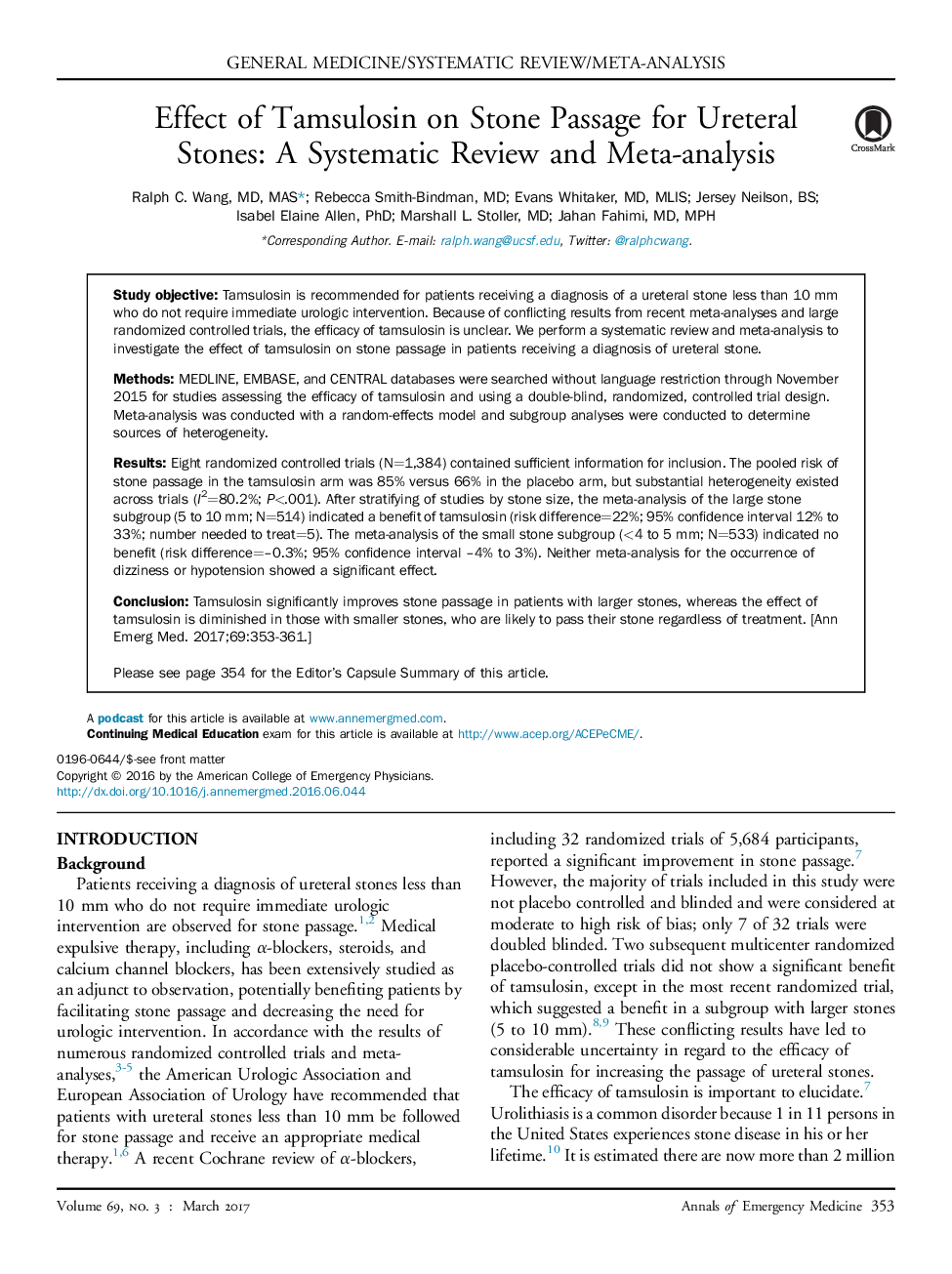| Article ID | Journal | Published Year | Pages | File Type |
|---|---|---|---|---|
| 5651727 | Annals of Emergency Medicine | 2017 | 12 Pages |
Study objectiveTamsulosin is recommended for patients receiving a diagnosis of a ureteral stone less than 10 mm who do not require immediate urologic intervention. Because of conflicting results from recent meta-analyses and large randomized controlled trials, the efficacy of tamsulosin is unclear. We perform a systematic review and meta-analysis to investigate the effect of tamsulosin on stone passage in patients receiving a diagnosis of ureteral stone.MethodsMEDLINE, EMBASE, and CENTRAL databases were searched without language restriction through November 2015 for studies assessing the efficacy of tamsulosin and using a double-blind, randomized, controlled trial design. Meta-analysis was conducted with a random-effects model and subgroup analyses were conducted to determine sources of heterogeneity.ResultsEight randomized controlled trials (N=1,384) contained sufficient information for inclusion. The pooled risk of stone passage in the tamsulosin arm was 85% versus 66% in the placebo arm, but substantial heterogeneity existed across trials (I2=80.2%; P<.001). After stratifying of studies by stone size, the meta-analysis of the large stone subgroup (5 to 10 mm; N=514) indicated a benefit of tamsulosin (risk difference=22%; 95% confidence interval 12% to 33%; number needed to treat=5). The meta-analysis of the small stone subgroup (<4 to 5 mm; N=533) indicated no benefit (risk difference=-0.3%; 95% confidence interval -4% to 3%). Neither meta-analysis for the occurrence of dizziness or hypotension showed a significant effect.ConclusionTamsulosin significantly improves stone passage in patients with larger stones, whereas the effect of tamsulosin is diminished in those with smaller stones, who are likely to pass their stone regardless of treatment.
